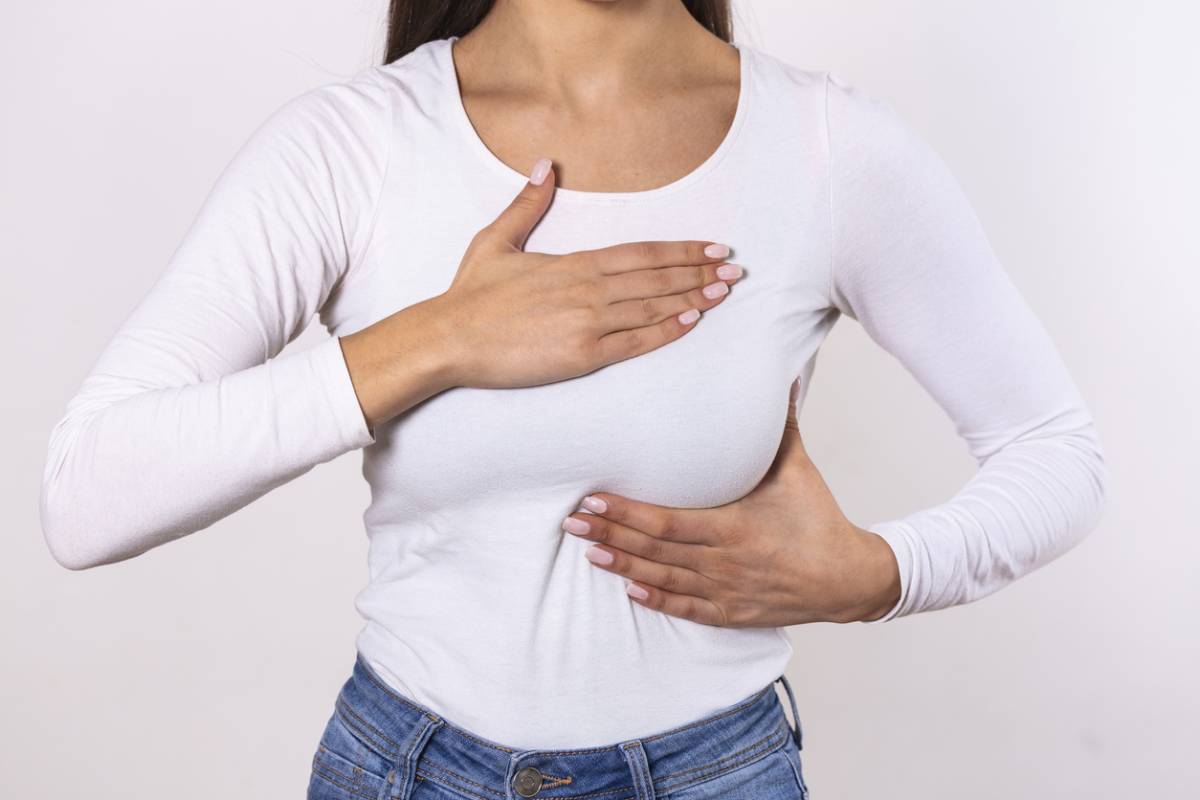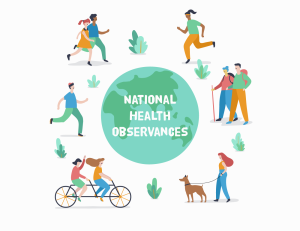Doing a breast self-exam at home helps you detect breast changes so you can discuss them with a healthcare provider. Regular self-breast exams can help you maintain breast health and detect cancer early when it’s easier to treat. Most lumps and abnormalities aren’t cancer, but you should still share any changes with a provider.
OVERVIEW
What is a breast self-exam?
A breast self-exam is a step-by-step method you can use to examine your breasts. By looking at and feeling your breasts regularly, you can better notice changes in your breasts or detect when something feels different. Most healthcare providers agree that while mammograms are the best screening tool to detect breast abnormalities, a breast exam you can do at home is the best way for you to be familiar with your own breasts.
Should I do a breast self-exam?
Monthly breast self-exams can help you detect changes that may be signs of infection, breast disease or breast cancer. The goal of doing a breast self-exam is recognizing what’s normal for you. Knowing how your breasts typically look and feel can help you notice a change (if one were to occur).
Self-exams are important for your breast health. But they should never replace breast exams from your provider and screening tests like mammograms. You should still see your primary care provider and/or gynecologist regularly for breast cancer screenings.
Talk to your healthcare provider about performing self-breast exams. They can tell you what they recommend based on your health history and show you how to perform one correctly.
How often should I do a breast self-exam?
Most healthcare associations recommend performing a breast self-exam monthly. Despite it not being a reliable way to detect breast cancer, it’s still the most helpful thing you can do at home for your breast health.
Research shows that many people with breast cancer say that finding a lump at home was how they first knew something was different. Knowing what’s normal for your breasts allows you to alert a provider as soon as you notice changes.
Is there a time of the month I should do breast self-exams?
People who are still menstruating (having a regular period) should perform a breast self-exam after their period ends. People who have reached menopause and people who have very irregular periods can pick a day each month. Choose a day that’s consistent and easy to remember, like the first day of the month, the last day of the month or your favorite number. Keep a journal of your findings or make a note in your smartphone of what you see and feel.
TEST DETAILS
How do I do a self-breast exam?
There are a few different ways to perform a breast exam at home:
- Looking in a mirror: Take off your shirt and bra and stand in front of a mirror. Put your arms down by your sides. Look for any changes in breast shape, breast swelling, dimpling in your skin or changes in the position of your nipples. Next, raise your arms high over your head and look for the same things. Finally, put your hands on your hips and press firmly to make your chest muscles flex. Look for the same changes again. Be sure to look at both breasts.
- Manual breast self-exam while standing: Remove your shirt and bra. Use your right hand to examine your left breast, then vice versa. With the pads of your three middle fingers, press on every part of one breast. Use light pressure, then medium, then firm. Feel for any lumps, thick spots or other changes. A circular pattern may help you make sure you hit every spot. Then, press the tissue nearest your armpit. Be sure to check under your areola (area around your nipple) and then squeeze your nipple to check for discharge. Repeat the steps on the other side. Many people perform a standing self-exam while in the shower.
- Manual breast self-exam while lying down: When you lie down, your breast tissue spreads more evenly. This makes it a good position to feel for changes, especially if your breasts are large. Lie down and put a pillow under your right shoulder. Place your right arm behind your head. Using your left hand, apply the same technique as option 2, using the pads of your middle fingers to press all parts of your breast tissue and under your armpit. Finally, swap the pillow to the other side, and check your other breast and armpit. Be sure to check under your areola and then squeeze your nipple to check for discharge.
Keep in mind that your breast tissue extends to your armpit, collarbone and top of your abdomen. Your breast tissue isn’t just your breast cleavage and nipples.
How long does a breast exam take?
A breast self-exam takes only a few minutes and can easily be built into your daily schedule. You can do a breast exam when you’re:
- Dressing for the day or undressing at night.
- Lying in bed in the morning or at bedtime.
- Taking a shower.
What are the problems with doing a breast self-exam?
A self-exam is beneficial in helping you become aware of the normal look and feel of your breasts. But there can be issues with breast self-exams. Some of the risks of self-exams include:
- Belief that a self-exam replaces a clinical breast exam (breast exam from your provider) or mammograms. A breast self-exam is an at-home tool to help you become familiar with your body. Some people falsely believe that because they perform self-breast exams, they don’t need to see a healthcare provider.
- Anxiety that comes from thinking you have a lump or abnormality. Most lumps aren’t cancerous, but thinking you have a cancerous lump may give you unnecessary anxiety or worry.
RESULTS AND FOLLOW-UP
What kind of lumps are normal to feel in your breasts?
Lumps in your breast tissue are normal and not necessarily a reason to panic. Some people have naturally lumpier breast tissue. Becoming aware of what’s normal for you can better help you distinguish when something isn’t normal.
When should I call my healthcare provider?
Contact a healthcare provider if you notice:
- A lump or other change in how your breast tissue feels.
- Irregular or bloody discharge from your nipple.
- Dimpling, redness or swelling of your skin.
- Changes in the direction of your nipple such as turning inward.
Keep in mind that things like menstruation can affect the way your breasts look and feel. A healthcare provider can perform a breast exam to see if they believe diagnostic tests like ultrasound or mammogram are necessary.
ADDITIONAL DETAILS
What are the warning signs of breast cancer?
A self-breast examination isn’t a diagnostic tool for breast cancer. Only a trained healthcare provider can confirm if a lump you feel during a self-exam is potentially harmful. Becoming aware of the signs of breast cancer can also be helpful as you get to know your breasts. Some warning signs of breast cancer are:
- Inverted nipple or nipples that stop sticking out.
- Redness, soreness, a rash or swelling on your breasts.
- Dimpling or puckering (like an orange peel) of the skin of your breasts.
- Irregular nipple discharge.
Why are breast exams no longer recommended?
It’s not that healthcare providers don’t recommend them, it’s that providers know that self-exams aren’t necessarily the most effective way to detect or screen for breast cancer. But most providers will still recommend you become familiar with your breasts by performing breast exams at home. This is the best way to know what’s normal for you so that when/if a change occurs, you’re able to report it to your provider.
Is a self-breast exam better than a mammogram?
A breast self-exam shouldn’t replace a mammogram or a breast exam from a healthcare provider. A breast self-exam is an at-home tool you can use between annual mammograms or clinical breast exams your provider performs. It shouldn’t be a substitute for a mammogram. A mammogram is still the gold standard in detecting breast cancer.
A note from Cleveland Clinic
Performing a monthly breast self-exam will help you maintain breast health and detect early signs of disease. You can incorporate the steps of a breast exam into your regular routine, such as when you get ready for bed or take a shower. With each breast self-exam, you’ll become more familiar with your body. When you know what’s normal for you, you’ll be more aware when/if changes occur. You can then discuss these changes with your healthcare provider.
Source: Cleveland Clinic







